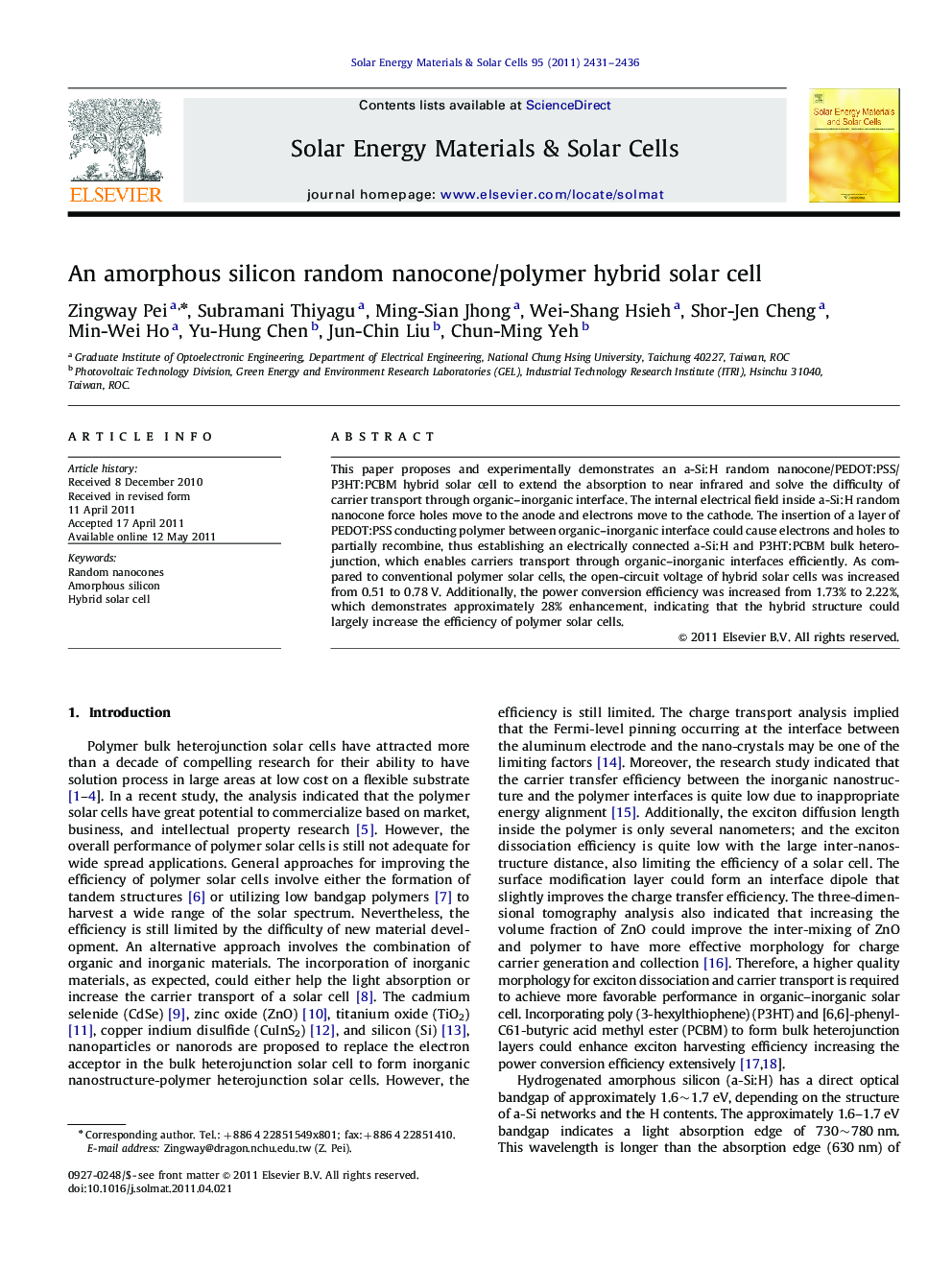| کد مقاله | کد نشریه | سال انتشار | مقاله انگلیسی | نسخه تمام متن |
|---|---|---|---|---|
| 78801 | 49342 | 2011 | 6 صفحه PDF | دانلود رایگان |

This paper proposes and experimentally demonstrates an a-Si:H random nanocone/PEDOT:PSS/P3HT:PCBM hybrid solar cell to extend the absorption to near infrared and solve the difficulty of carrier transport through organic–inorganic interface. The internal electrical field inside a-Si:H random nanocone force holes move to the anode and electrons move to the cathode. The insertion of a layer of PEDOT:PSS conducting polymer between organic–inorganic interface could cause electrons and holes to partially recombine, thus establishing an electrically connected a-Si:H and P3HT:PCBM bulk heterojunction, which enables carriers transport through organic–inorganic interfaces efficiently. As compared to conventional polymer solar cells, the open-circuit voltage of hybrid solar cells was increased from 0.51 to 0.78 V. Additionally, the power conversion efficiency was increased from 1.73% to 2.22%, which demonstrates approximately 28% enhancement, indicating that the hybrid structure could largely increase the efficiency of polymer solar cells.
Graphical AbstractFigure optionsDownload as PowerPoint slideHighlights
► Si Nanowire/Polymer hybrid solar cell has been demonstrated.
► The insertion of PEDOT:PSS layer could enhanced the carrier collection efficiency.
► The P/I Si Nanowire could enhance the carrier transport in the solar cell.
Journal: Solar Energy Materials and Solar Cells - Volume 95, Issue 8, August 2011, Pages 2431–2436